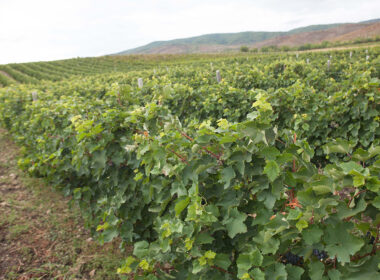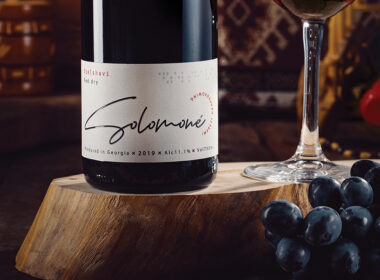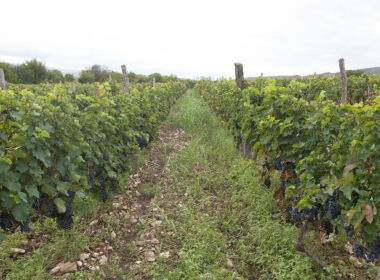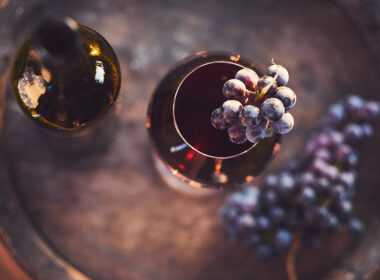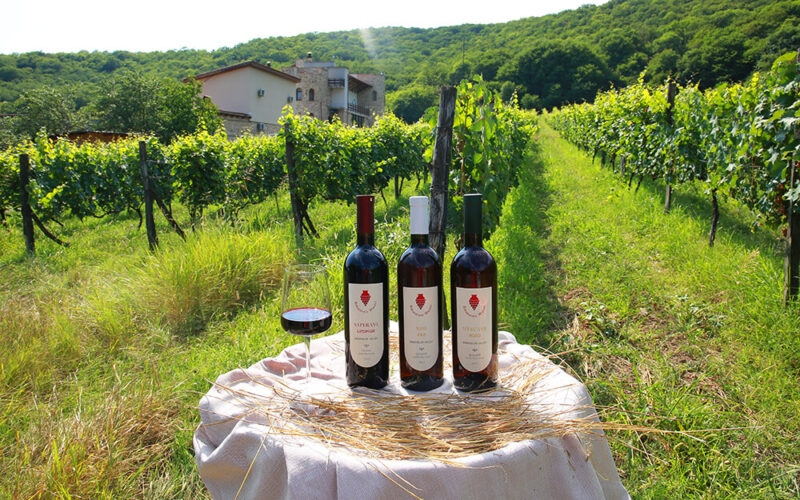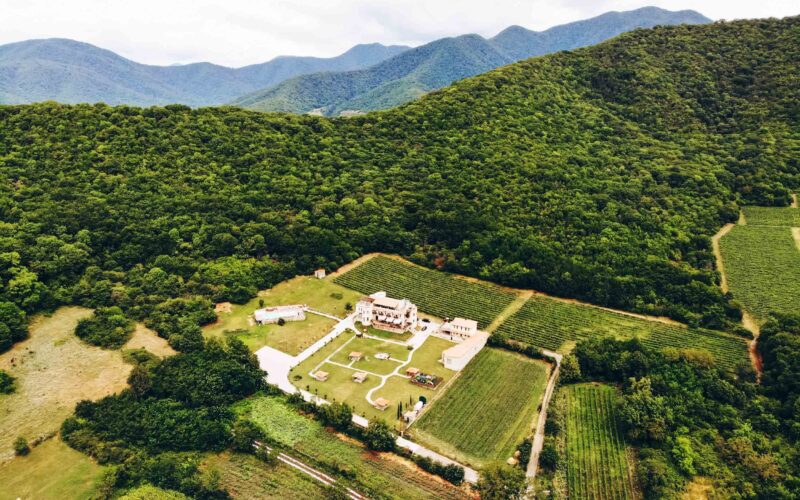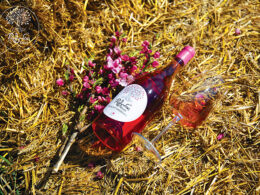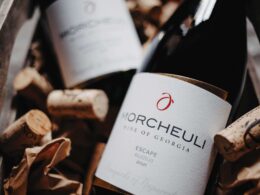Keti Kvichidze
Using wine to make dishes and sauces exists in many world cuisines, and it is centuries old. The wine perfectly cuts the fat content of dishes. For instance, adding Riesling to a very popular European dish – risotto – helps maintain its “crunchiness” while neutralising its fattiness with dry tones. Dishes and sauces made from Pinot, Chardonnay, and Sauvignon Blanc are also equally attractive. One thing we have to remember when making sauces is to keep the balance of sweetness and acidity: alcohol evaporates during the boiling process, aromas become more distinguished. So, using the right and appropriate amount of dry white wine is crucial. Wines with distinct characters, such as Riesling or Gewürztraminer, are considered less “flexible”; however, they give an extraordinary result in combination with a cream sauce.
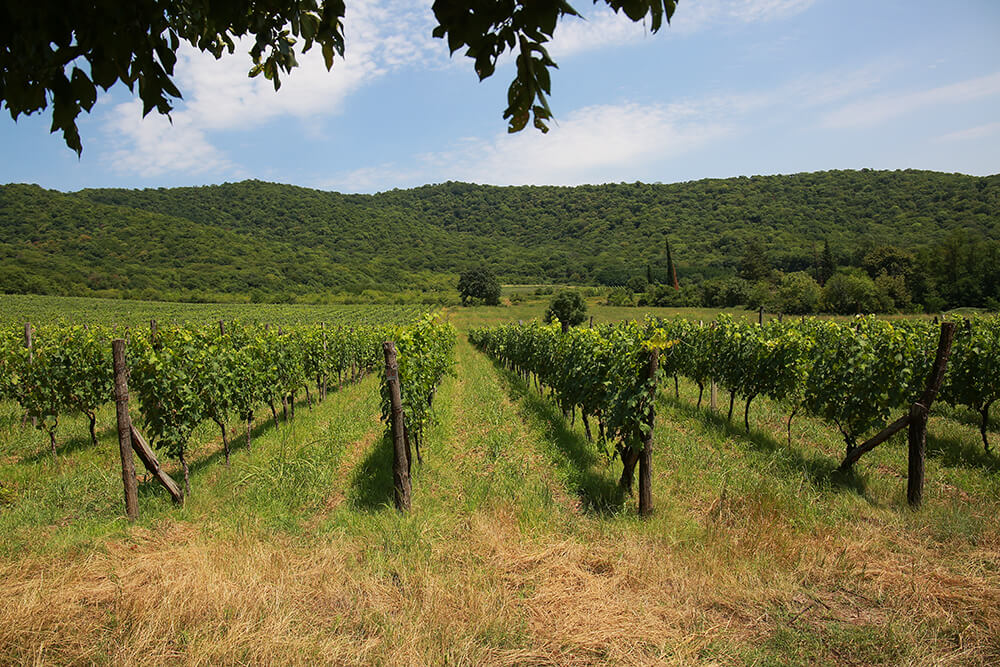
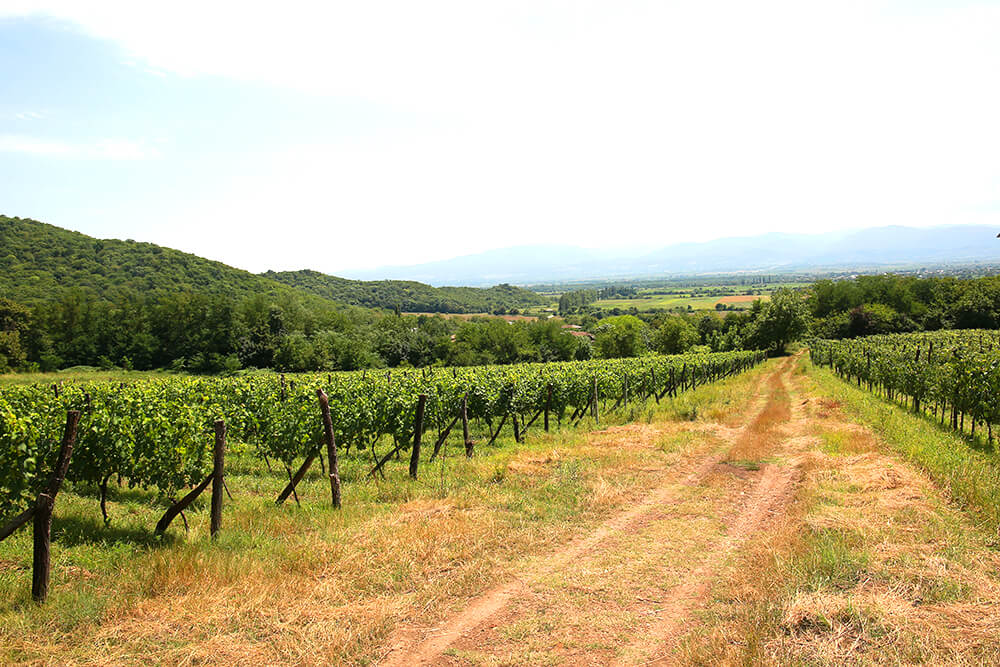
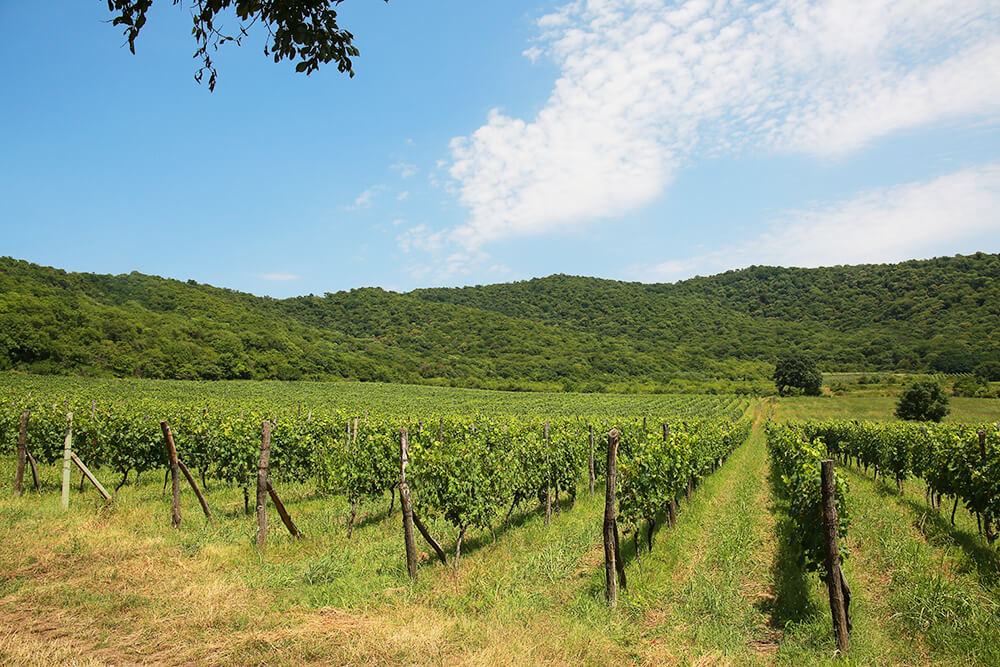
The tradition of using wine in dishes and sauces is also well-preserved in Georgian cuisine. Our journey for this issue of the Homeland of Wine is solely dedicated to dishes made with wine. This tradition is often used in East Georgia.
We begin our journey in “Babaneuris Marani”, located in Babaneuri village, Akhmeta region, Kakheti. Our hosts are Nino Ninua and Vakho Idoidze, husband and wife. Their wine cellar and wines are already well-known around the world.
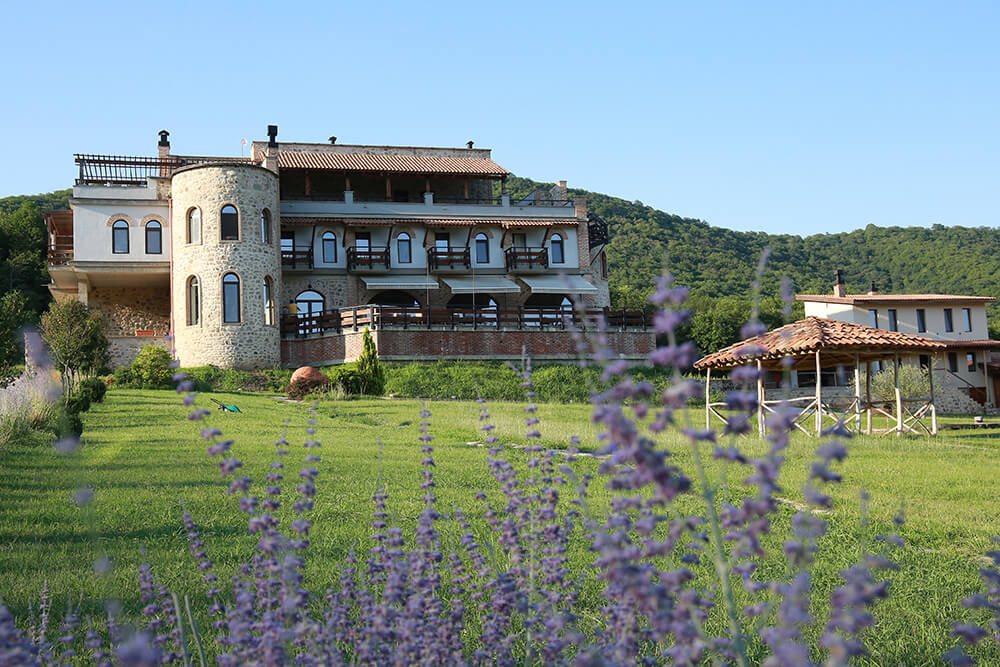
Akhemta is situated in Kakheti, on the right bank of Alazani river, on a broad valley between the lower run of Ilto and Orvili rivers, at the entrance of Pankisi gorge. Distinguished by the Sun, water, and fertile soil, the fruits that grow here, especially the grapes, are exceptionally aromatic.
“Akheta” wines hold an honorary place in the PDO regions of Georgia. The location of this micro-zone, characteristic climate (dry subtropical to moderately humid subtropical), and dark brown carbonate soils define the unique attributes of “Akhema” wine. White “Akhmeta” wine is solely made from Kakhuri Mtsvane grape variety grown in Akhmeta micro-zone, while amber “Akhmeta” is made by adding Kisi and Khikhvi varieties to Kakhuri Mtsvane, all grown in this micro-zone.
Babaneuri village of the Akhmeta region is one of the exceptional micro-zones. Local wines have remarkable aromas. “Babaneuris Marani” stands on the mountainside, surrounded by vineyards. The view from here is rich and colorful both in Summer and Autumn. Sunsets here are impressive and unforgettable, as is the scent of lavender. Looking at the view from here, you will know that you are in the homeland of wine.
There is a saying in cooking: “If you wouldn’t happily drink the wine, don’t cook with it, either.” However, this saying does not apply to local wines. They are suitable for drinking and cooking alike. They give exceptional aroma and taste to dishes of the region. Kakheti cuisine is famous for its variety, influenced by cuisines of different conquerors (Qists, Lekis, Udis etc).
A dish that unites all the greens of Spring
Chakapuli – the crown jewel of Georgian cuisine. “Coriander goes great with the lamb” – Ivane Javakhishvili writes in his description of Chakapuli, frequently called the Spring dish. Its vibrancy is widely associated with the coming of Spring – when nature awakens, and all is, once again, green. This is reflected in Chakapuli: lamb, with freshly flowered coriander, green onion, fresh garlic stalks, tarragon, watercress, mint, and ripe sour cherry-plum (or wild green plum, tkemali) are all layered in a large pot, adding Kisi from “Babaneuris Marani,” salt and green paprika. This dish needs to stew; that’s when it gives off an extraordinary aroma that spreads everywhere. We consume Chakapuli with bread made in “tone.” You will never forget the taste of bread dipped in a slightly sour broth of Chakapuli.
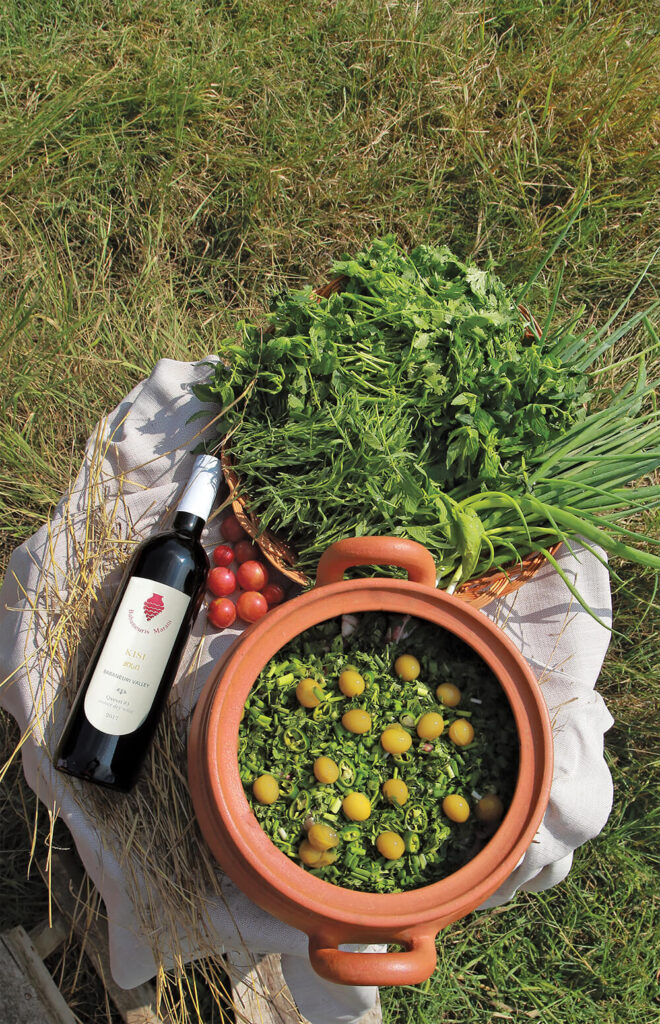
Despite being the pearl of Georgian cuisine, we do not have much information about Chakapuli. One thing we know is that it was cooked in shepherds’ families when Spring came. Ivane Javakhishvili encountered Chakapuli and Mokapuli in Qiziki settlement. I remember my grandfather from Kakheti made Chakapuli for us every Spring. According to him, only coriander, watercress, green onion, and white wine were added to the dish. Kakhetian elders listed the same ingredients during my culinary expedition. Tarragon was added to Chakapuli later on – this herb was considered exotic in Georgia and was rarely used in cooking. It was meant to be consumed fresh at the table. Tarragon gave a distinct aroma to the dish and, pairing well with sour plums, and wine forever enlisted itself as the ingredients of Chakapuli.
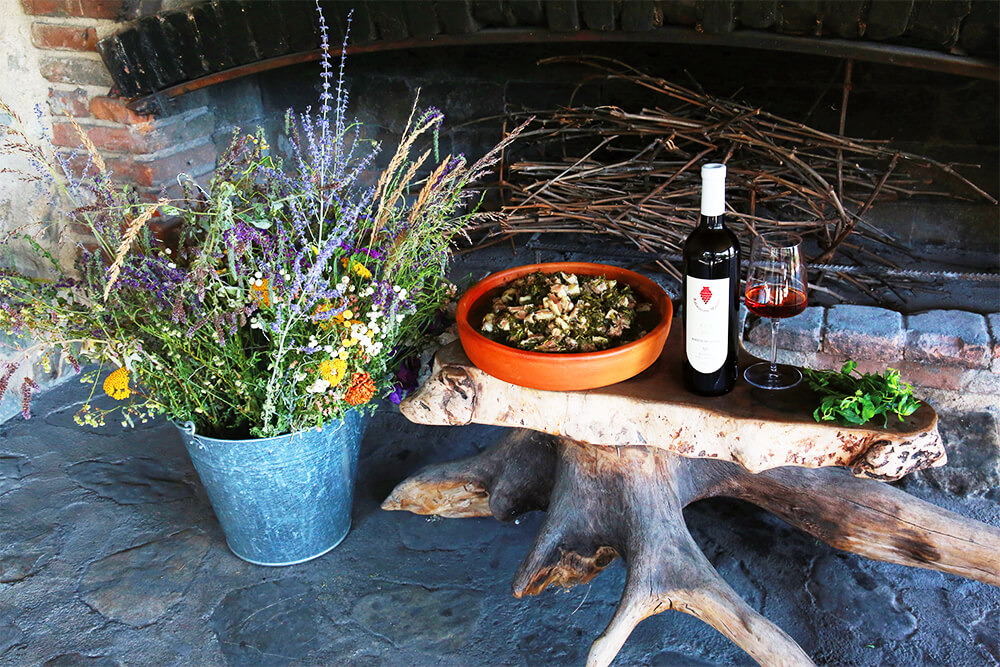
Bughlama – fish dish with aromatic notes of “Babaneuris Marani” Mtsvane
We come across the description of “Bughlama” is Ioseb Grishashvili’s “Urban Dictionary”: “Bughlama is a dish made by first frying onions and adding lamb or chicken. All is boiled without water. It can also be fish, seasoned with bilberry, wild plum, and sourness”. I suspect this dish came to Georgia from Persia. It is cooked with meat or fish. In “Babaneuris Marani,” it is made with deboned sturgeon (salmon or catfish from the Alazani river can also be used). Small pieces of fish are placed in a pot adding layers of coriander, sour cherry plum, bilberry, a handful of green onions, garlic, paprika, bay leaves, black pepper, and Mtsvane wine from “Babaneuris Marani.” After 20 minutes on an open fire, the dish is ready. The acidity of wine neutralises fat and gives the dish exquisite notes.
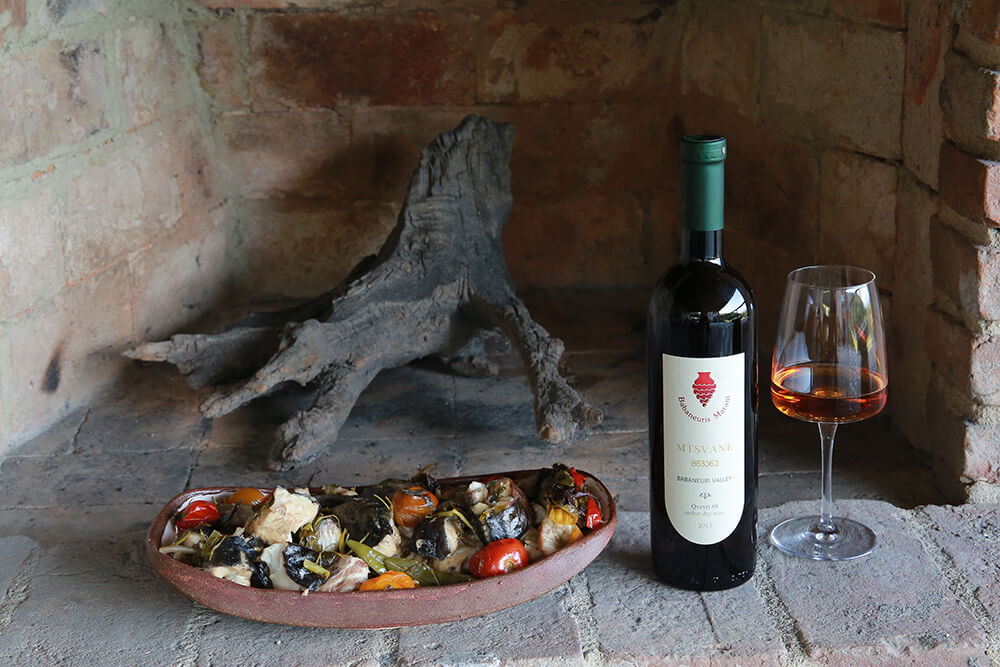
Boghlitso – wine and bread with sacral meaning
Boghlitso is bread soaked in Saperavi. It is mainly considered to be the food of the monks. Its genius is in its simplicity – a partnership of red wine and dried Shoti bread might not seem remarkable, but Boghlitso is famous for its healing properties. It was even given to toddlers to try. It is also the food offered at communions in church. Georgians have consumed this dish for centuries for its nutritional and healing properties.
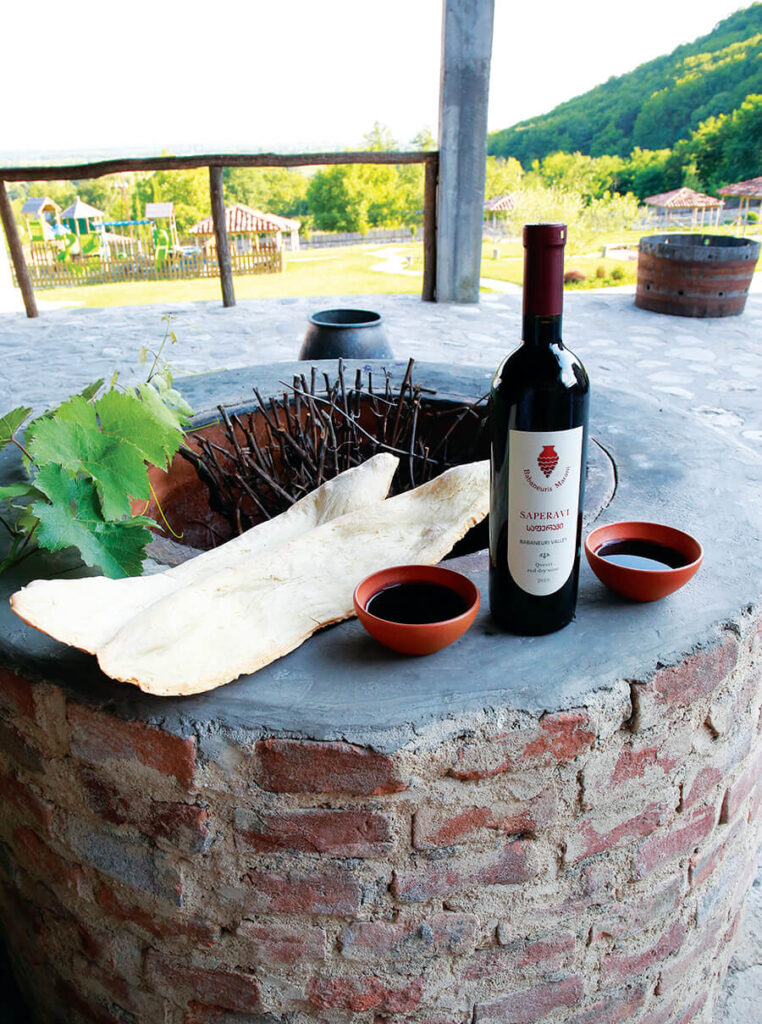
I’ve had the habit of soaking bread in Saperavi for years now. I encountered a similar dish in the Racha-Lechkhumi region. Locals call it warm wine soup, adding a bit of garlic, coriander, walnuts, or flour to red wine. In Samegrelo, Boghlitso bears the name of Ghalatsitsi. While in these areas, I came across an exciting sauce called Tsitsaqa: saffron and a slightly watered-down vinegar are added to pounded coriander and green paprika. Tsitsaqa has to be consumed with wine – the fact so stressed by Ivane Javakhishvili: “We take a lot of Tsitsaqa, coriander, saffron, salt and pound them together. We will then dilute this mass with wine. Ancestors consumed this liquid while drinking wine”.
Wine vinegar is an exceptional component of both East and West Georgian cuisines. Wine vinegar is added to most Georgian dishes: to Pkhali dish in Imereti, to Satsivi in Guria, to Chikhirtma in Kartli. Khevsurians even add vinegar to Khinkali.
Another exciting endeavor is making sauce from unripe grape, so-called isrimi (“Mkukhi” in Guria and Samegrelo). Isrim-makvali is the queen of sauces and goes exceptionally well with seared chicken. Unripe grapes are also used in French cuisine. I remember my astonishment when Eric Boyard, a french culinary explorer, added unripe grape juice and white wine to ancient French dishes. I instantly exclaimed: “We cook the same way!”.
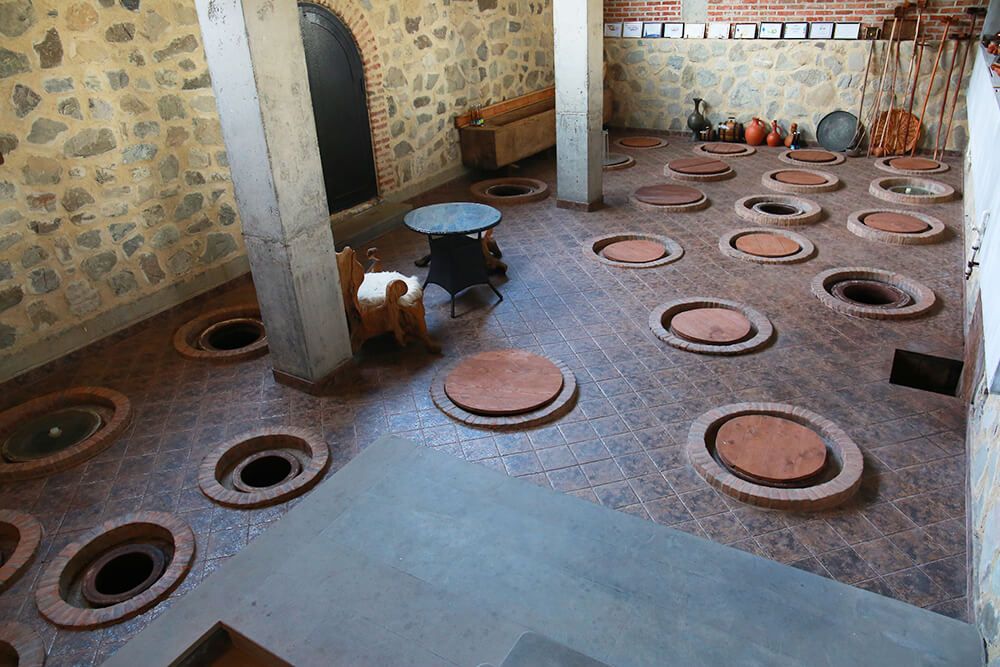
Our journey into making dishes with wine in “Babaneuris Marani” has come to an end: local Kisi elevated Chakapuli, Mtsvane went perfectly with Bughlama, and Saperavi enriched Boghlitso. Sitting here with Nino and Vakho, taking in all the aromas and wonderful tastes, enjoying the sunset and lavender scent, it was hard to imagine going back to an everyday life and leaving all of this behind.

